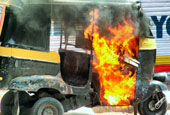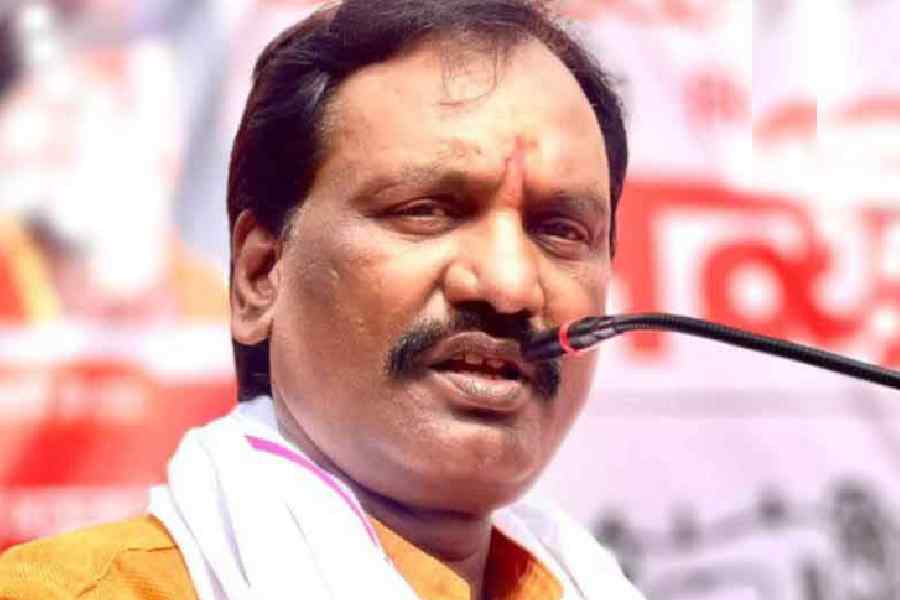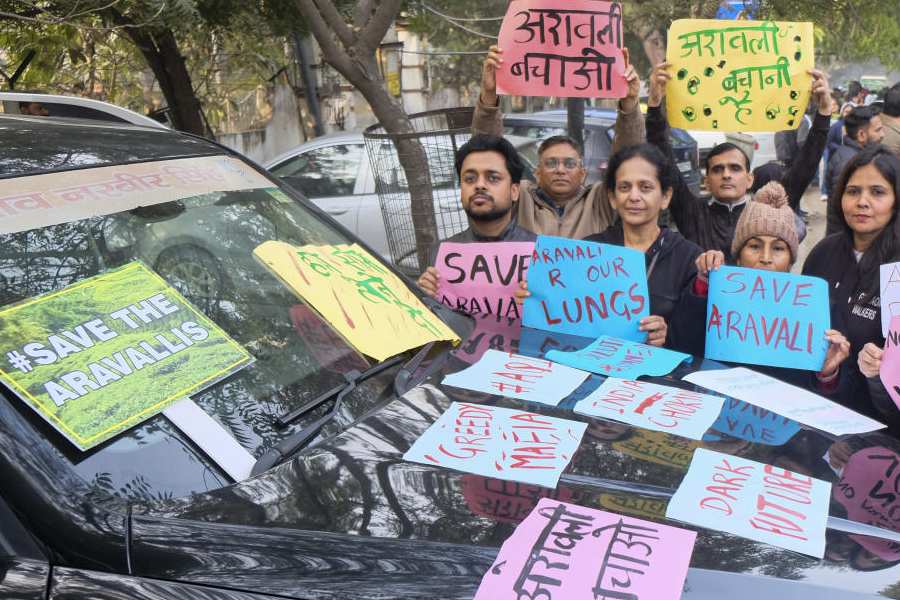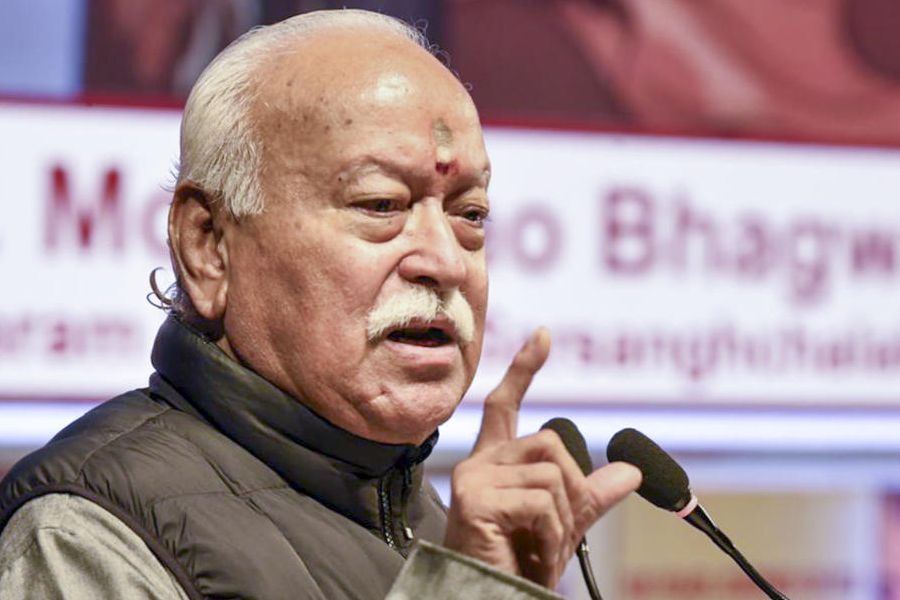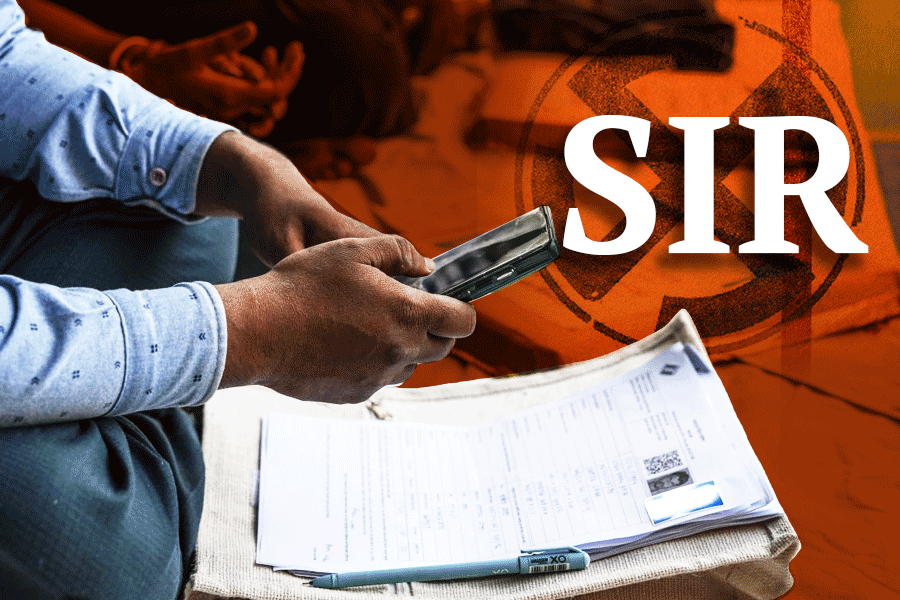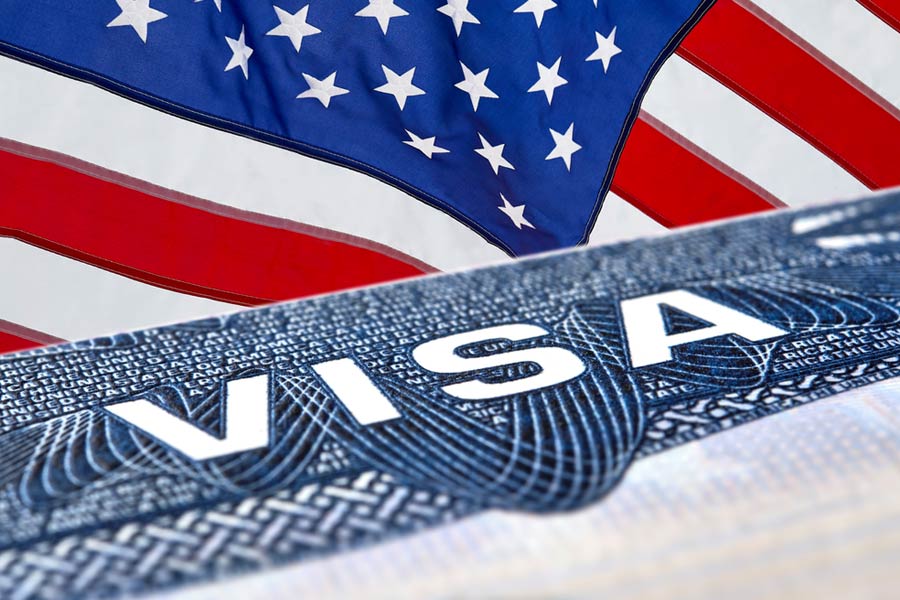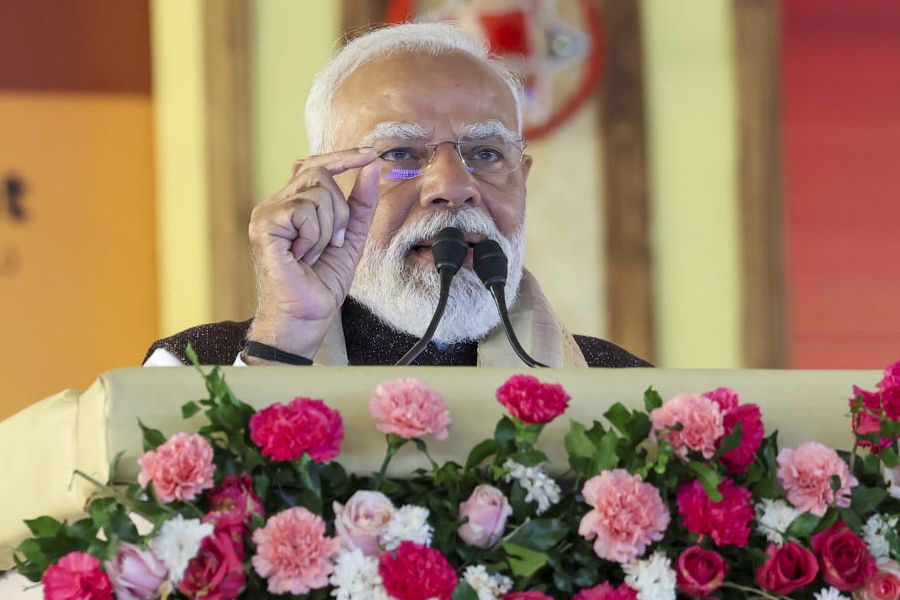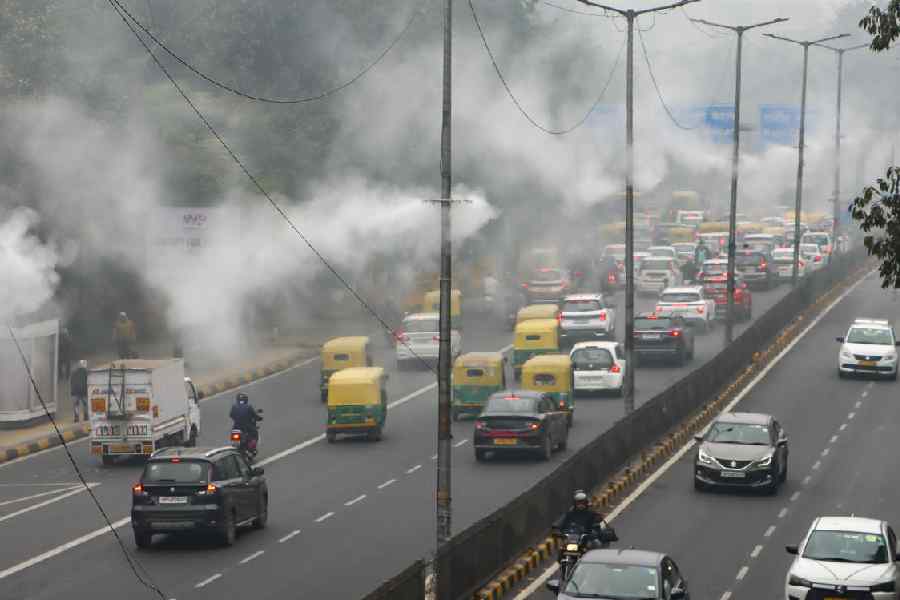 |
| STILL BURNING: An autorickshaw set ablaze in Baroda in the riots that followed the Godhra massacre |
Long before February 27, 2002, Godhra was known for its gigantic cemetery that ran into several acres, the river Mesri and as a green belt where cows grazed in the lap of nature. The only time it gained notoriety was in 1980 when a Hindu-Muslim riot resulted in an unprecedented curfew of 14 months.
Godhra, 150 kms from Ahmedabad, would have been relegated to the cobwebs of history as the capital of the Panchmahal district, rich in forest and tribals. And then, five years ago, a train was set ablaze near the railway station, killing at least 60 people.
The railway station has been fenced up with huge walls. Signal Falia — the Muslim pocket abutting the station and where it all started — has changed. You can smell poverty, and few children ever go to school there. Muslims who had successful shops, all razed in the violence that followed, have been all left with nothing.
Today, power feeders for Muslim colonies in Godhra are separated from the rest of the town and they are subjected to frequent power outages. The sense of alienation for Muslims is acute. Muzaffar Ali, who lives in one of the villages in Panchmahal district, holds that there is an economic boycott on miya shops. Hindus, on the other hand, accuse Muslims of cow slaughter. There is no healing of old wounds.
Yet, when the Sabarmati Express trooped in from Ayodhya with its band of die-hard kar sevaks, Godhra was not waiting to happen. The Muslims in Godhra were as good or as bad as any other community in Gujarat at the time.
There was anger brewing in the Godhra municipality, though. The Bharatiya Janata Party (BJP) was seething, for 24 independent and some Congress councillors had just pulled the rug from beneath their feet. And, coincidentally, after the Sabarmati Express blaze, all the routed BJP councillors emerged as independent witnesses to claim that the new president of the Godhra municipality had egged on the rioters.
Thus, Mohammad Kalota, the president of the Godhra municipality, found himself labelled a terrorist — like 56-year old Maulana Umerji, who was at the forefront of the relief work and who complained about Gujarat chief minister Narendra Modi to Prime Minister, A.B. Vajpayee. Says his son, Saed Umerji, “All that my father did was point towards Modi and ask him who was responsible.” Maulana Umerji and cement factory owner Abdul Razak Dantiya found themselves booked for conspiracy in the Godhra case.
The story repeats itself elsewhere. Mukhtar, a steel industrialist supporting people displaced by the violence that followed in Gujarat, has been booked in cases involving rape and other charges. In Rehmat Nagar in Godhra, a family of Pathans has five brothers behind bars. “They picked our men from home and claimed that they were part of the conspiracy. In my life we went to that wretched Godhra station only once on Id when I visited my mother’s house,” cries 35-year-old Khairunissa, wife of one of the accused, Shamser Khan Pathan.
In another house in the same colony, Nafeesa has lost her vision and wails for her two sons — both accused in the Godhra carnage. “Sabir and Allaudin were running a bakery and we lived so well. Now my daughter-in-law begs as she is not able to make ends meet working as a domestic servant,” says Nafeesa.
Five years after the Gujarat genocide, that left 2000 dead and lakhs displaced, Godhra seems caught in a time-warp. “Development has eluded the place,” says Iliyas, a relief worker.
When the first riots in Godhra happened in 1980, it had already eschewed its rights to development. A huge industrial project by the Gujarat Industrial development Corporation was taken away and established at Halol and Khalol, 25 kms away. The family of Naseem Mohammad Sheikh lived in Halol, and was among the several Muslim families in the area that thrived because of the growth of the industrial centre.
Naseem Sheikh’s family grew vegetables and also traded in them. When Godhra happened, the images on television and newspapers incited a blaze of anger among the locals. Twenty members of her family were brutally hacked to death. The dead included her husband, her 16-year old daughter who was also raped and her parents. Ironically, she learnt that the man who killed her husband and her daughter was none other than the Hindu vegetable trader who “almost grew up in our house”.
Naseem was one of the few women who rose from the riots to spread the message of communal harmony. Today, she lives in a relief camp set up by NGOs. There are 11 widows, all young and with children, in Kasimabad, near Halol-Kalol where she lives. Except for Naseem, all the women saw their husbands being slaughtered. Two of the women, including Naseem’s sister-in-law, were raped.
Naseem is left with a son who she hopes will turn out to be a model citizen. There is no “rancour for Hindus” in her, she stresses. “But I will fight for justice.”

